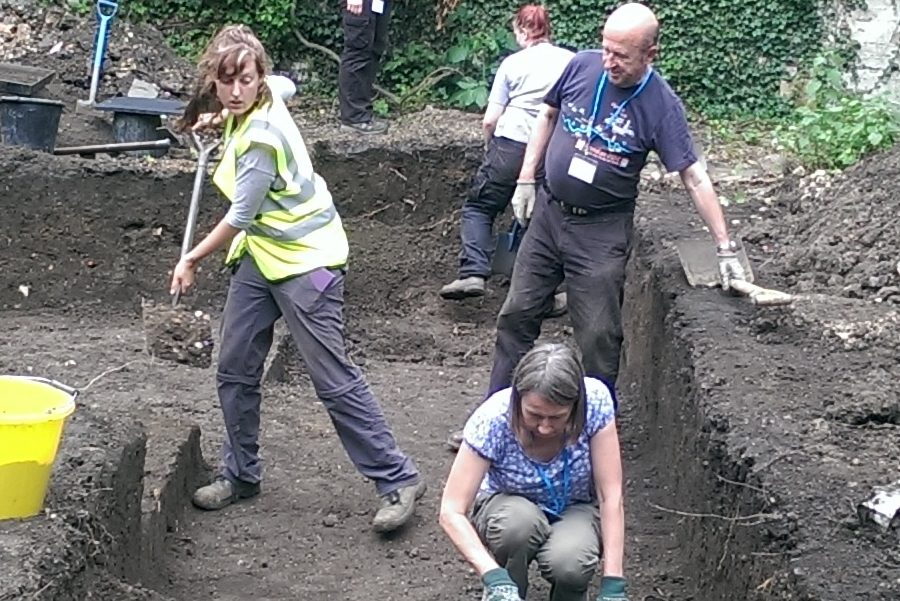Peterborough Cathedral organised an archaeological dig in the Deanery garden in June to coincide with Peterborough Heritage Festival. FRAG members were amongst nearly 100 volunteers who participated in the excavation.
The focus of the archaeology was on the Late Anglo-Saxon period, including investigating the possibility that the burh wall crosses the garden area.
The Saxon village and church that made up the original settlement of Peterborough on the banks of the River Nene was called Medehamstede meaning ‘meadow homestead’ and was taken from the meadows that were either side of the River Nene.
Peterborough, like many other places up and down the east coast of England, was ransacked by Danish and Viking raiders during the 8th and 9th centuries. One particular raid on the town in 870 AD completely destroyed the church.
When the new church was rebuilt a century later in 972 AD as an abbey, it was also deemed necessary to build some defences around the monastic site as the country was still not safe from raids from the continent.
The entire Precinct was fortified in 1005 AD with a defence called a burgh (or burh). This is likely to have consisted of an earthwork with additional defences made from stone and/or wood. It was when the burgh was constructed that the name of Medehamstede was changed first to Goldenburgh and then Peterburgh (after the saint dedication of the church and the presence of the fortification burgh).



